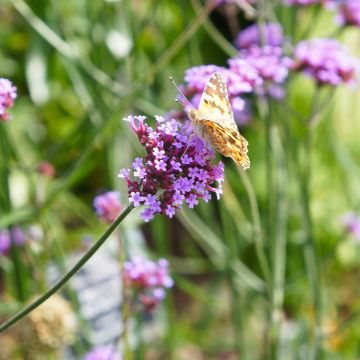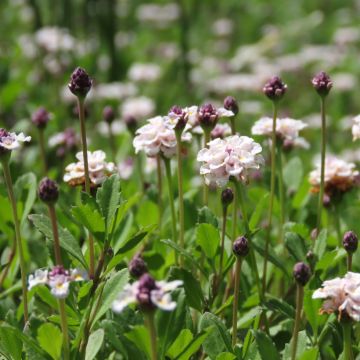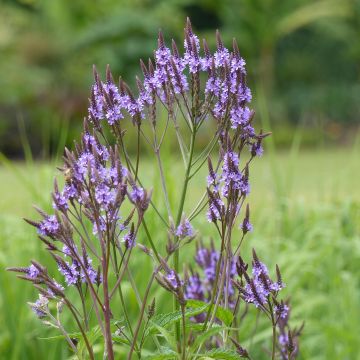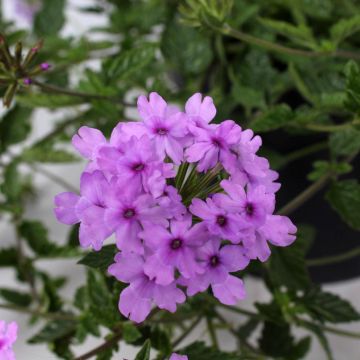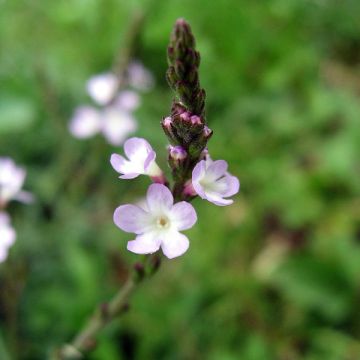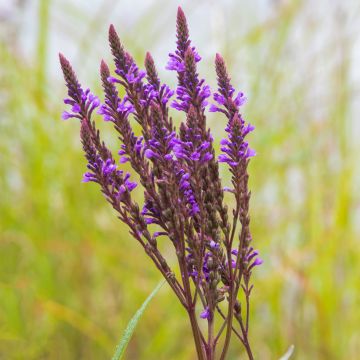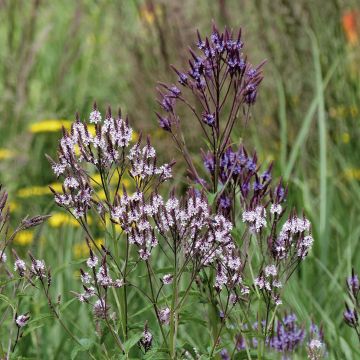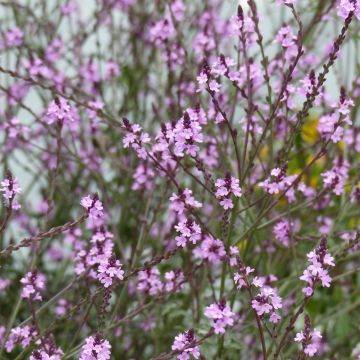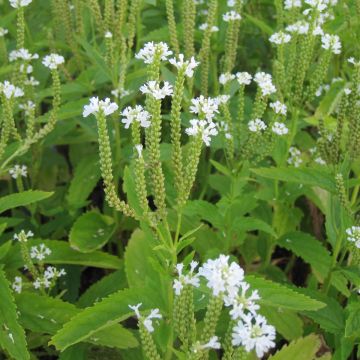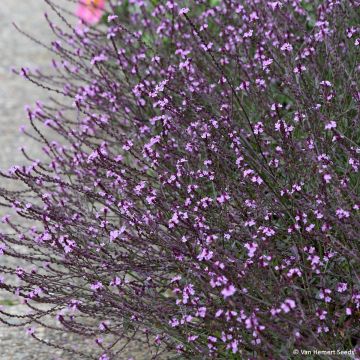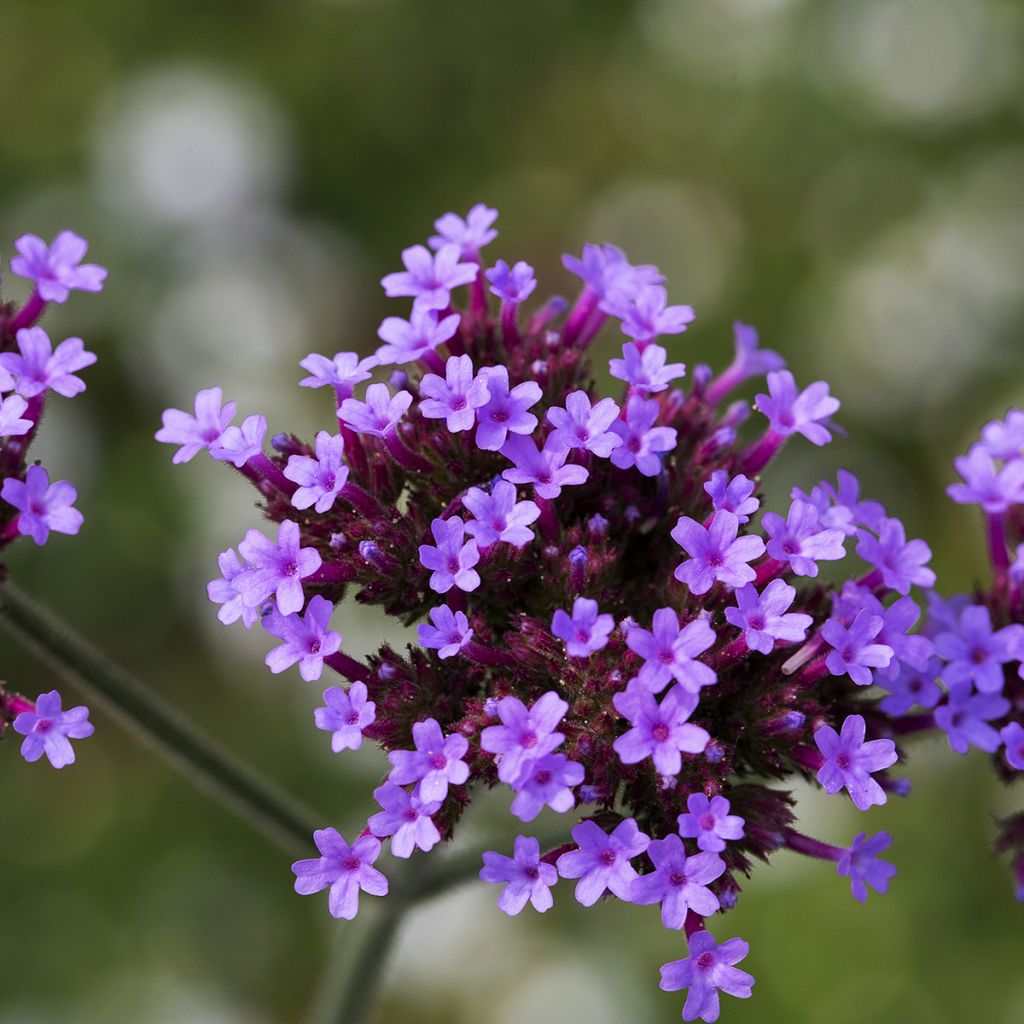

Verbena bonariensis Vanity
Verbena bonariensis Vanity
Verbena bonariensis Vanity
This item cannot be shipped to the selected country
Delivery charge from €5.90
More information
Schedule delivery date,
and select date in basket
This plant carries a 6 months recovery warranty
More information
We guarantee the quality of our plants for a full growing cycle, and will replace at our expense any plant that fails to recover under normal climatic and planting conditions.
From €5.90 for pickup delivery and €6.90 for home delivery
Express home delivery from €8.90.
Does this plant fit my garden?
Set up your Plantfit profile →
Description
'Vanity' is appreciated for its more branched and compact habit, as well as its more colourful and abundant flowering compared to the species Verbena bonariensis. It is ideal for borders and flower pots. It is a truly undemanding plant, with small umbels of bright purple flowers that attract butterflies from late spring to autumn. This semi-hardy perennial, often grown as an annual, brings elegance and lightness to its companion plants. This variety has received the Fleuroselect Gold Medal.
Verbena bonariensis 'Vanity' was bred in 2020 in the Netherlands by Van Hemert & Co. It belongs to the Verbenaceae family, and its wild ancestor is native to South America, from Brazil to Argentina. The 'Vanity' variety is shorter and bushier than the species. It reaches about 75cm (30in) in height when in flower and 45cm (18in) in width. Between late May and June, vigorous square stems rise towards the sky, branching at the top. They bear numerous small rounded inflorescences, composed of bluish-purple tiny tubular flowers with purple bracts. The flowers attract many pollinating insects. The blooms emit a subtle fragrance in the early morning and evening. The flowering continues uninterrupted until October. Hardy down to -8°C (17.6°F) in well-drained soil, this plant withstands summer drought when planted in the ground.
Like a light curtain, 'Vanity' adds depth and lightness to borders. It is easy to grow if planted in the sun. It looks stunning in a large pot, alongside Anthemis, for example. In borders, it blends perfectly with ornamental grasses and dry-soil asters for a light and natural look.
Please be aware that our young plug plants are professional products intended for experienced gardeners. Upon receipt, transplant them as soon as possible, either in pots and flower boxes, or directly in borders.
Report an error about the product description
Flowering
Foliage
Plant habit
Botanical data
Verbena
bonariensis
Vanity
Verbenaceae
Cultivar or hybrid
Other Verbena - Vervain
Planting and care
Plant your plug plants as soon as you receive them. Use a 7 to 9cm (3 to 4in) pot filled with good soil. Pinch the end of the stem to promote branching. Keep them in a cool, well-ventilated, and bright room. 'Vanity' is relatively hardy and can withstand light frosts without any problem. After 4 to 6 weeks, you can replant them outdoors. A well-established plant, in the ground, can tolerate brief frosts around -7 to -8°C (19.4 to 17.6°F).
Plant 'Vanity' in the centre of an annual pot where it will bring lightness and a natural, transparent look. Always use good commercial soil, renewed every year. Slow-release fertiliser (Osmocote) is recommended for optimal results.
In flower beds, plant in a sunny position, in soft, deep, well-drained soil that is moist to dry in summer. It tolerates limestone, but dislikes very clayey, heavy, and compact soils.
Planting period
Intended location
Care
This item has not been reviewed yet - be the first to leave a review about it.
Haven't found what you were looking for?
Hardiness is the lowest winter temperature a plant can endure without suffering serious damage or even dying. However, hardiness is affected by location (a sheltered area, such as a patio), protection (winter cover) and soil type (hardiness is improved by well-drained soil).

Photo Sharing Terms & Conditions
In order to encourage gardeners to interact and share their experiences, Promesse de fleurs offers various media enabling content to be uploaded onto its Site - in particular via the ‘Photo sharing’ module.
The User agrees to refrain from:
- Posting any content that is illegal, prejudicial, insulting, racist, inciteful to hatred, revisionist, contrary to public decency, that infringes on privacy or on the privacy rights of third parties, in particular the publicity rights of persons and goods, intellectual property rights, or the right to privacy.
- Submitting content on behalf of a third party;
- Impersonate the identity of a third party and/or publish any personal information about a third party;
In general, the User undertakes to refrain from any unethical behaviour.
All Content (in particular text, comments, files, images, photos, videos, creative works, etc.), which may be subject to property or intellectual property rights, image or other private rights, shall remain the property of the User, subject to the limited rights granted by the terms of the licence granted by Promesse de fleurs as stated below. Users are at liberty to publish or not to publish such Content on the Site, notably via the ‘Photo Sharing’ facility, and accept that this Content shall be made public and freely accessible, notably on the Internet.
Users further acknowledge, undertake to have ,and guarantee that they hold all necessary rights and permissions to publish such material on the Site, in particular with regard to the legislation in force pertaining to any privacy, property, intellectual property, image, or contractual rights, or rights of any other nature. By publishing such Content on the Site, Users acknowledge accepting full liability as publishers of the Content within the meaning of the law, and grant Promesse de fleurs, free of charge, an inclusive, worldwide licence for the said Content for the entire duration of its publication, including all reproduction, representation, up/downloading, displaying, performing, transmission, and storage rights.
Users also grant permission for their name to be linked to the Content and accept that this link may not always be made available.
By engaging in posting material, Users consent to their Content becoming automatically accessible on the Internet, in particular on other sites and/or blogs and/or web pages of the Promesse de fleurs site, including in particular social pages and the Promesse de fleurs catalogue.
Users may secure the removal of entrusted content free of charge by issuing a simple request via our contact form.
The flowering period indicated on our website applies to countries and regions located in USDA zone 8 (France, the United Kingdom, Ireland, the Netherlands, etc.)
It will vary according to where you live:
- In zones 9 to 10 (Italy, Spain, Greece, etc.), flowering will occur about 2 to 4 weeks earlier.
- In zones 6 to 7 (Germany, Poland, Slovenia, and lower mountainous regions), flowering will be delayed by 2 to 3 weeks.
- In zone 5 (Central Europe, Scandinavia), blooming will be delayed by 3 to 5 weeks.
In temperate climates, pruning of spring-flowering shrubs (forsythia, spireas, etc.) should be done just after flowering.
Pruning of summer-flowering shrubs (Indian Lilac, Perovskia, etc.) can be done in winter or spring.
In cold regions as well as with frost-sensitive plants, avoid pruning too early when severe frosts may still occur.
The planting period indicated on our website applies to countries and regions located in USDA zone 8 (France, United Kingdom, Ireland, Netherlands).
It will vary according to where you live:
- In Mediterranean zones (Marseille, Madrid, Milan, etc.), autumn and winter are the best planting periods.
- In continental zones (Strasbourg, Munich, Vienna, etc.), delay planting by 2 to 3 weeks in spring and bring it forward by 2 to 4 weeks in autumn.
- In mountainous regions (the Alps, Pyrenees, Carpathians, etc.), it is best to plant in late spring (May-June) or late summer (August-September).
The harvesting period indicated on our website applies to countries and regions in USDA zone 8 (France, England, Ireland, the Netherlands).
In colder areas (Scandinavia, Poland, Austria...) fruit and vegetable harvests are likely to be delayed by 3-4 weeks.
In warmer areas (Italy, Spain, Greece, etc.), harvesting will probably take place earlier, depending on weather conditions.
The sowing periods indicated on our website apply to countries and regions within USDA Zone 8 (France, UK, Ireland, Netherlands).
In colder areas (Scandinavia, Poland, Austria...), delay any outdoor sowing by 3-4 weeks, or sow under glass.
In warmer climes (Italy, Spain, Greece, etc.), bring outdoor sowing forward by a few weeks.

































